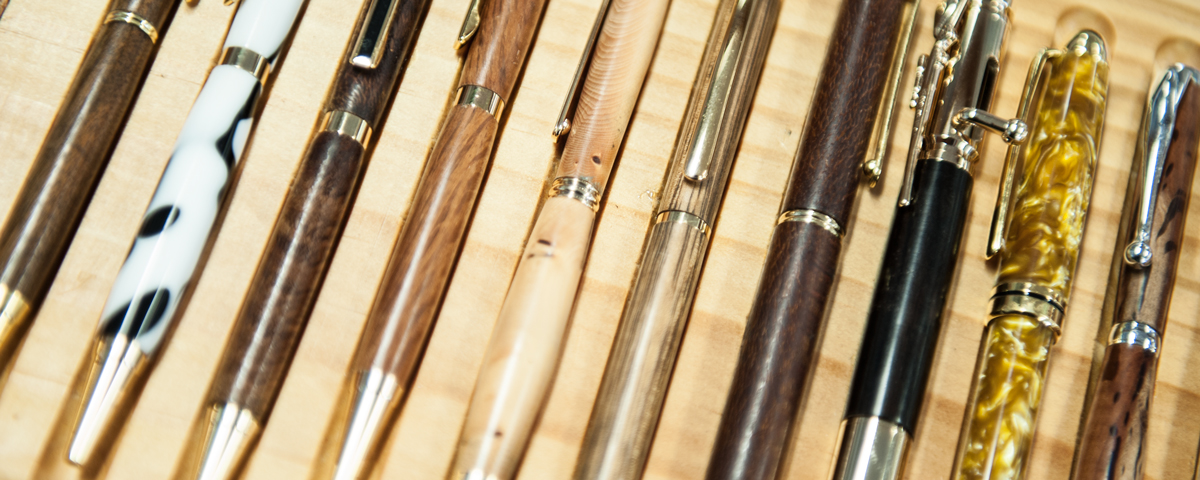Cameron Ward shares his addiction to pen turning.
Turning pens is a fun and rewarding hobby. This is undoubtedly the reason behind its increasing popularity. Its easy accessibility in terms of prerequisite skill level and relative affordability makes it the hobby of choice for most first-time woodworkers.
In its own way, pen turning also offers a basic introduction to the wider world of woodturning. However, it's often the added appeal of pen turning that sets it apart from other woodturning pursuits. Simply stated, turned pens are easy and inexpensive to make, allow the use of a wide variety of synthetic and natural materials, and above all else they make for a practical and beautiful gift. It's been my experience that a well-turned project will almost always be appreciated by the intended recipient. This - coupled with the exhaustive range of pen kits and materials now available - means that the scope for incorporating individual design elements is limited only to the turner's imagination. You need only look at the number of websites, clubs, forums and books dedicated to pen turning to gauge the extent to which this avenue of woodturning has become so popular.
The following is a simple overview I've provided to get you started turning pens. I'll briefly discuss the tools, accessories and consumables you'll need, along with a few tips and hints that I've picked up along the way. The rest - as they say - is up to your imagination.

The Lathe
The first thing you'll need is a lathe. Thanks to the introduction of the original Carbatec Mini Economy Lathe in the early '90s, home hobbyists now have access to an unprecedented range of 'mini' and 'midi' lathes. Of the lathes currently available on the market, I have owned and used the Carbatec MC1018 and Woodfast WM-305 lathes. Both represent excellent value and offer a range of features and benefits that are user-friendly and ideally suited to the novice pen turner. In addition both are considered 'midi' lathes as opposed to smaller 'mini' lathes, largely due to their features and expanded capacity. A few of these features include:
- a powerful 1/2hp motor
- larger swing and distance between centres that is suitable for the demands of most general craft projects
- a metric M30 x 3.5 spindle
- a number 2 Morse taper tailstock
These specifications are now fairly standard for 'midi' level lathes. However, this isn't necessarily the case with all comparable lathes on the market, and for serious pen and craft turning I'd recommend these points worthy of consideration when purchasing a new lathe. The benefits of these features become apparent when you wish to upgrade your lathe capability. It also adds to the future resale value of your lathe. Speed range is important - ensure that you're able to run the lathe at 500 to 3000rpm. This will give you the flexibility you need to complete the various tasks involved in completing a turned pen, from drilling the blank and milling the ends to turning the blank and finally, sanding and finishing it.
The Mandrel
The next thing you will need is a mandrel. This allows you to turn a pen between centres without the risk of interference that you'd otherwise encounter when turning material between centres. Of all mandrels available I've always found the standard type MAND-92 with a number 2 Morse taper to be the most useful. Also, if the particular pen kit you're turning requires you to turn a shorter length, you can use old bushes and pen tubes to pack out a mandrel. However, a standard mandrel will normally come fitted with a set of bushes that fit most 7mm twist pen types. These are by far the most ubiquitous pen type on the market - I don't know of any pen turner who hasn't lost count of the number of these that they've made!
Hopefully this advice will help you turn your first pen! For our full range of turning equipment, click here.